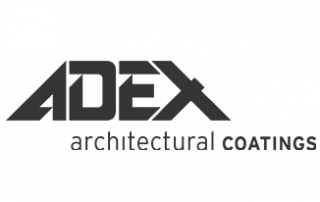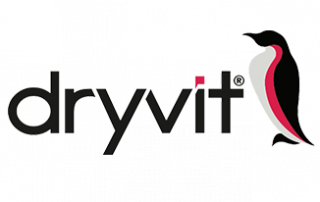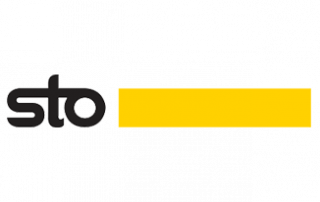Do You Have A Construction Project We Can Help With?
About EIFS
Exterior Insulation and Finish Systems (EIFS) offer continuous insulation by design, allowing architects the design flexibility and aesthetics they require, while helping to meet the new energy codes. EIFS are continuous insulation.
According to the definitions of the International Building Code and ASTM International, an Exterior Insulation and Finish System (EIFS) is a nonload bearing, exterior wall cladding system that consists of an insulation board attached either adhesively or mechanically, or both, to the substrate; an integrally reinforced base coat; and a textured protective finish coat.
EIFS with Drainage, another EIFS system, is the predominate method of EIFS applied today. As the name implies, EIFS with Drainage helps to eliminate moisture before it has an opportunity to enter the wall cavity.


- A water-resistive barrier (WRB) that covers the substrate
- A drainage plane between the WRB and the insulation board that is most commonly achieved with vertical ribbons of adhesive applied over the WRB
- Insulation board typically made of expanded polystyrene (EPS) which is secured with an adhesive or mechanically to the substrate
- Glass-fiber reinforcing mesh embedded in the base coat
- A water-resistant base coat that is applied on top of the insulation to serve as a weather barrier
- A finish coat that typically uses colorfast and crack-resistant acrylic co-polymer technology.
EIFS today are one of the most tested and well researched claddings in the construction industry. Research, conducted by the Oak Ridge National Laboratory and supported by the Department of Energy, has validated that EIFS are the “best performing cladding” in relation to thermal and moisture control when compared to brick, stucco, and cementitious fiberboard siding. In addition EIFS is in full compliance with modern building codes which emphasize energy conservation through the use of CI (continuous insulation) and a continuous air barrier. Both these components are built into today’s EIFS products to provide maximum energy savings, and reduced environmental impact over the life of the structure. Along with these functional advantages come virtually unlimited color, texture, and decorative choices to enhance curb appeal and enjoyment of almost any home or structure.
Traditional Concrete-Based Stucco
Concrete-based stucco is a combination of Portland-based cement and sand that is usually applied onto metal lath. There are three steps to installing traditional concrete-based stucco: Metal lath, Concrete Coat, and Color Coat.
The primary benefit of Traditional Stucco is that it is extremely hard, compared to EIFS stucco. This type of stucco is most often found in older homes and those built in the Middle Tennessee area since 2000.
The drawbacks of Traditional Stucco are issues with cracking and the loss of the insulation that EIFS provides. Most cracking of Traditional Stucco is the result of improper installation and not the stucco itself. Once this type of stucco has been installed properly and cured, it is very seldom affected by changing weather conditions. Traditional Stucco can still experience problems when moisture migrates behind the outside layer of stucco, which can lead to the same moisture-related problems that EIFS stucco is known for.
Metal Lath
Traditional Concrete Based Stucco Metal lath increases the strength of the stucco, and if applied correctly, can reduce the amount and size of any cracking that can occur. The metal lath includes expansion joints that allow for movement of the concrete over time, corner beads that allow the installer to create straight corners, and other metal pieces that help improve the quality of the finished product. This can be a layer of tar paper or house wrap. Recent building codes have changed the materials that can be used as a vapor barrier, and they now require two layers of vapor barrier materials instead of one. On older homes, many stucco applicators used metal lath that has a very thin layer of black paper glued onto the lath. We have found that over time this black paper deteriorated and dissolved. Without a vapor barrier, when the stucco gets wet, water will permeate into the underlying wood and lead to moisture-related problems. Older homes built before 1985 typically have a metal lath that rusts over time because it is not galvanized, which can lead to cracking, delamination, and discoloration of the final stucco material.
Concrete Coat
Traditional Concrete Based Stucco
After the metal lath is installed, two layers of concrete are applied. The first is called the scratch coat because the applicator “scratches” the surface so that the next layer of concrete will adhere better to the first layer.
The next step is to add the second layer of concrete, called the brown coat.
Traditional Concrete Based Stucco
The stucco concrete used today is significantly better than the concrete materials used in the past. It contains microfibers that increase the strength of the concrete, and acrylic compounds which allow the concrete to expand and contract with less cracking.
One important step after the concrete dries is to let it “cure”. This takes approximately 28 days. As concrete cures, it shrinks and hardens. Hot, dry weather will cause the concrete to dry out too fast and create cracking. To help the concrete dry properly throughout the curing process, it should be kept moist by spraying water on the surface every day.Traditional Concrete Based Stucco
Color Coat
Traditional Concrete Based Stucco
The finished cement layer can be painted, but is most often coated with a Color Coat that often contains pigments that add color to the outside layer of cement. The benefit of using a special Color Coat is that the texture is consistent, as a result of higher quality sand that is used in the Color Coat.
There are two different categories of Color Coat materials: acrylic-based and cement-based.
Acrylic-based Color Coat materials are similar to paint, with sand added to the mix, and provide a consistent color across the entire surface. Often, acrylic colors are found on modern homes and most commercial buildings. Acrylic-based Color Coat materials can be cleaned and painted to restore the surface to a “like-new” condition. Most EIFS stucco applications use acrylic-based Color Coat materials.
Cement-based Color Coat materiacls most often use dry mixtures that create a variegated color on the wall when they dry. This type of finished color is very beautiful when completed, but can be very difficult to match later, if you add another stucco wall or try to repair an area of an existing cement-based Color Coat material. These types of finishes also fade over time, which can be desirable if that is the look you want.
Trusted Partners
Working with Trusted Partners across the Canadian Retail ecosystem creates a unified approach to building a life spaces.
Get A Quote Today
We are ready to answer your construction needs! You can find our contact information and online request form here. Find us on Facebook and LinkedIn.



